Bb11.9
The distance from Phakt
(α Columbae, *84), the Dove
released by Noah in order to search for Land,

to Spica (α Virginis, *202)
was 118 right ascension nights.

And 118 * 26000 (years in the precessional cycle as measured by the ancients) / 365.25 = 8340 = AD 1842 (my assumed era for
the rongorongo texts) + 6498 BC or approximately
the
place between Gemini and Cancer.
... Men's spirits were thought to dwell in
the Milky Way between incarnations. This conception has been
handed down as an Orphic and Pythagorean tradition fitting into
the frame of the migration of the soul. Macrobius, who has
provided the broadest report on the matter, has it that souls
ascend by way of Capricorn, and then, in order to be reborn,
descend again through the 'Gate of Cancer'. Macrobius talks of
signs; the constellations rising at the solstices in his
time (and still in ours) were Gemini and Sagittarius: the 'Gate
of Cancer' means Gemini ...
The number of glyphs on the G tablet was designed to be one less
than 16 * 29½ (= 472) → 354
+ 118 - 1 = 471 → 1½ * 314
→ 364 + 107.
|
64 |
16 |
11 |
27 |
|
118 =
4 * 29½ |
... Time flows on and not
until its measures have been completed in full
can there be notches (nights) carved into the
wood ...

We should count from the December solstice (355) instead of from
January 1 (366), which means March 21 will be day number 11 + 80
= 91 (→ 364 / 4).
Then we should also count with the
effects of the precession since the era of Julius Caesar -
corresponding to the right ascension line when
Polaris was at day zero → the day before The First Point of Aries
(Sheratan, the Signs,
the Pair of Stars, *27). 118 - 27 = 91. Or counting from January 1 → 80
+ 27 = 107.
 |
 |
 |
 |
 |
 |
|
Bb10-42 |
Bb11-1 |
Bb11-2 (420) |
Bb11-3 |
Bb11-4 |
Bb11-5 |
|
HELIACAL STARS: |
|
Uttara Bhādrapadā-27 (2nd of
the Blessed Feet) /
Wall-14 (Porcupine)
ο Oct. (1.3),
ALGENIB PEGASI = γ Pegasi
(1.8) |
χ Pegasi (2.1), θ Andromedae (2.7) |
σ Andromedae (3.0), ι Ceti (3.3), ζ Tucanae (3.5), ρ
Andromedae, π Tucanae (3.7) |
No star listed (4) |
ANKAA =
α
Phoenicis,
κ
Phoenicis (5.0)
ALPHARD (α Hydrae) |
λ Phoenicis (6.3),
β
Tucanae (6.4)
*6.4 - *41.4 = *147.0 - 182.0 =
- *35.0 |
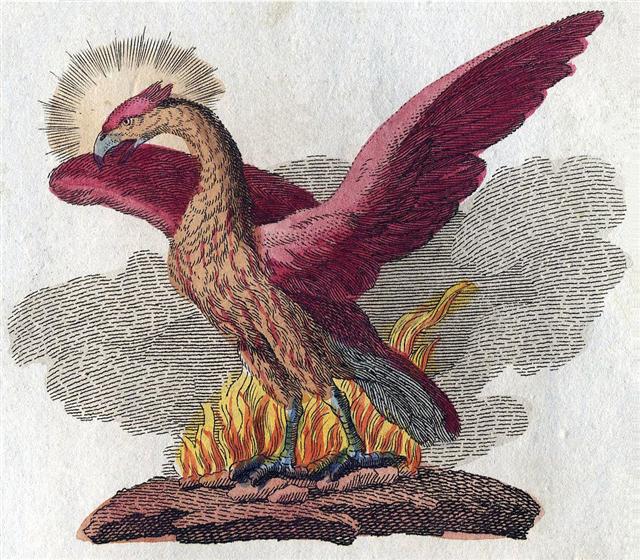
... Above the
Toucan the astronomer's bird (Grus) stretched
his long neck high with the bird on fire (Phoenix)
in front, from where the Eridanus River originated -
which was at the opposite side of the sky compared
to where the Hydra ended at the black bird Corvus
... |
|
Sept 20 |
21 (264) |
Equinox |
23 |
24 |
25 |
|
'Aug 24 (8 * 29½) |
25 (264 - 27 = 237) |
26 (201 + 37) |
27 |
28 (8 * 30 = 240) |
29 (*161) |
|
JULY 18 |
19 (200) |
20 |
21 |
22 (→ π) |
23 |
|
RIGHT ASCENSION
DAYS AT THE FULL MOON: |
|
ALCHITA
=
α
Corvi, MA WEI (Tail of the Horse) =
δ
Centauri
(183.1),
MINKAR =
ε
Corvi
(183.7),
ρ
Centauri (183.9) |
PÁLIDA (Pale) =
δ
Crucis
(184.6),
MEGREZ (Root of the Tail) = δ Ursae Majoris
(184.9) |
Hasta-13
(Hand)
/
Chariot-28
(Worm)
GIENAH (Wing) = γ Corvi
(185.1),
ε Muscae (185.2),
ζ
Crucis (185.4), ZANIAH (Corner) = η Virginis
(185.9)
*144.0 = *185.4 - *41.4 |
CHANG SHA (Long Sand-bank)
=
ζ
Corvi
(186.3) |
INTROMETIDA (Inserted) =
ε
Crucis (187.4),
ACRUX =
α
Crucis
(187.5)
*146.0 = *187.4 - *41.4 |
γ Com. Berenicis (188.0), σ Centauri (188.1),
ALGORAB = δ Corvi
(188.5),
GACRUX = γ Crucis
(188.7) |
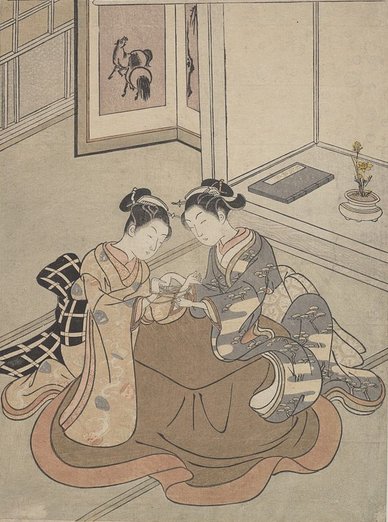
The star named Tail of the Horse
was at the Full Moon when the Sun was at Algenib,
the last of the 4 corner stars in the waterfilled
Pegasus Square. |
|
mai tae e hakaruoi
|
Kua huki |
ko te ariki |
tere ki te vai |
e tagata moe ra ki te huaga e |
kua tuu ko te toga |
|
Huki.
1. Pole attached to the poop from which the
fishing-net is suspended: huki kupega. 2.
Digging stick. 3. To set vertically, to
stand (vt.). 4. Huki á te mahina, said of the
new moon when both its horns have become visible.
Vanaga. 1. To post up, to publish. 2. To cut the
throat (uki). Mq.: Small sticks which close
up the ridge of a house. Ha.: hui, the small
uniting sticks in a thatched house. Churchill.
Standing upright. Barthel.M. Spit for roasting.
Te Huki, a constellation. Makemson. Hukihuki.
1. Colic. 2. To transpierce, a pricking. 3. To sink
to the bottom. Churchill. |
|
282 → 164 + 118 |
Oct 9 |
SPICA |
|
|
264 |
Sept 21 |
PÁLIDA |
|
|
200 |
July 19 |
*120 |
|
|
184 |
July 3 |
ADARA |
ipu ngutu
(*104) |
|
164 |
June 13 |
PHAKT |
ngaatu (*84) |
There were 18 days from Pálida
(the Pale star, δ Crucis) to Spica, i.e. there were 100
days from Phakt to Pálida (*184).
... Hotu said to his assistants [ki toona
titiro] Teke and Oti, 'Go and take banana shoots, taro
seedlings, sections of sugarcane to be planted, yam roots, sweet
potatoes with leaves (? rau kumaru), hauhau trees,
paper mulberry trees, sandalwood trees, toromiro trees,
ferns (riku), rushes [ngaatu],
yellow roots, tavari plants, moss (para), and
ngaoho plats. Take all of these things [anakenake te mee]
(i.e., all varieties of plants) and also grass [te mauku
tokoa]!' [E:56]
 |
 |
 |
 |
 |
 |
|
Bb11-6 |
Bb11-7 |
Bb11-8 (426) |
Bb11-9 |
Bb11-10 |
Bb11-11 |
|
Sept 26 |
27 |
28 (244 + 27) |
29 (2 * 136) |
30 (273 → 3 * 91)
|
Oct 1 |
|
'Aug 30 (242) |
31 |
'Sept 1 (244) |
2 (242 + 3) |
3 |
4 |
|
γ
Muscae (189.0),
AVIS SATYRA (Bird of the Satyrs) =
η
Corvi
(189.3),
ASTERION (Starry) =
β
Canum Ven.
(189.5),
KRAZ = β Corvi,
κ Draconis (189.7) |
α Muscae (190.2), τ Centauri (190.5), χ Virginis
(190.7)
ALDERAMIN (α Cephei) |
Al Áwwā'-11 (The Barker)
/
Shur-mahrū-shirū-18
(Front or West Shur)
SOMBRERO GALAXY = M104 Virginis
(191.1),
ρ
Virginis (191.4),
PORRIMA =
γ
Virginis,
γ
Centauri (191.5)
*150.0 = *191.4 - *41.4 |
ι Crucis (192.2), β Muscae (192.5),
MIMOSA = β Crucis
(192.9) |
No star listed (193) |
κ
Crucis (194.4),
ψ
Virginis (194.5),
μ
Crucis,
λ
Crucis (194.6),
ALIOTH (Fat Tail) =
ε
Ursae Majoris,
ι
Oct.
(194.8)
*153.0 = *194.4 - *41.4
→
17 * 9 |
 |
|
ma te tapamea - kua haga - kua
ati ia te kava |
ma te tapamea kua haga - kua
haaati ia a kava |
e tagata rua kua oho kua hua |
ma to
ihe |
The addition with 27 (→ 3 * 9)
right ascension days corresponding to the precessional
distance down from my assumed era of rongorongo to that of
Julius Caesar should not be taken as just a coincidence,
instead it was an integral part of the inherited fundamental
structure.
... As has already been mentioned, the
Delphians worshipped Dionysus once a year as the new-born
child, Liknites, 'the Child in the Harvest Basket',
which was a shovel-shaped basket of rush and osier used as a
harvest basket, a cradle, a manger, and a winnowing-fan for
tossing the grain up into the air against the wind, to
separate it from the chaff. The worship of the Divine Child
was established in Minoan Crete, its most famous early home
in Europe. In 1903, on the site of the temple of Dictaean
Zeues - the Zeus who was yearly born in Rhea's cave at Dicte
near Cnossos, where Pythagoras spent
'thrice nine hallowed days' of his initiation - was
found a Greek hymn which seems to preserve the original
Minoan formula in which the gypsum-powdered, sword-dancing
Curetes, or tutors, saluted the Child at his birthday feast.
In it he is hailed as 'the Cronian one' who comes yearly to
Dicte mounted on a sow and escorted by a spirit-throng, and
begged for peace and plenty as a reward for their joyful
leaps ...

For the Moon needed 27 right ascension nights more for her
quarters than those of the Sun:
|
91 |
182 |
273 |
364 |
455 |
|
27 |
54 →
Terminalia |
81 |
108 |
135 = 5 * 27 |
|
SHERATAN
(*27) |
'April 17
(107) |
ALGENIB |
'June 10
(161) |
TAU-ONO |
|
118 = 91 + 27 |
236 = 182 +
54 |
354 = 273 +
81 |
472 |
590 = 20 *
29½ |
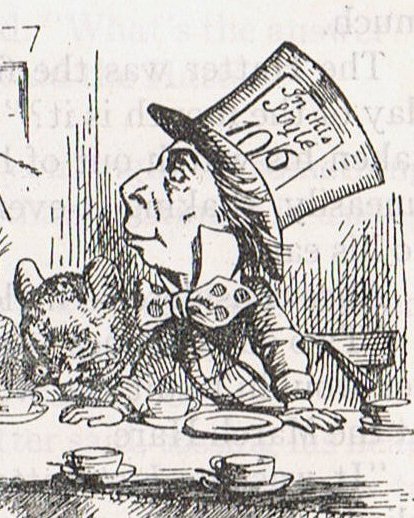
... Midsummer is the flowering season of the oak,
which is the tree of endurance and triumph, and like
the ash is said to 'court the lightning flash'. Its
roots are believed to extend as deep underground as
its branches rise in the air - Virgil mentions this
- which makes it emblematic of a god whose law runs
both in Heaven and in the Underworld ... The month,
which takes its name from Juppiter the oak-god,
begins on June 10th and ends of July 7th. Midway
comes St. John's Day, June 24th, the day on which
the oak-king was sacrificially burned alive. The
Celtic year was divided into two halves with the
second half beginning in July, apparently after a
seven-day wake, or funeral feast, in the oak-king's
honour ...
 |
 |
 |
 |
|
Bb11-12 |
Bb11-13 |
Bb11-14
(432) |
Bb11-15 |
|
Oct 2 |
3 |
4 (277 = 80 + 197) |
5 (278 →
378 - 100) |
|
'Sept 5 |
6 |
7 (277 -
27 = 250) |
8 (251 →
13 * 27 - 100) |
|
JULY 30
(211) |
31 (*132) |
AUG 1
(396 - 183) |
2 (214 →
314 - 100) |
|
JAN 29
(*314) |
30 |
31 (396) |
FEBR 1
(32) |
|
MINELAUVA
=
δ
Virginis
(195.1),
COR CAROLI =
α
Canum Ven.
(195.3) |
δ
Muscae (196.5) ,
VINDEMIATRIX (Grape Gatherer) = ε Virginis
(196.8) |
13h (197.8)
ξ¹ Centauri (197.1), ξ² Centauri (197.9) |
APAMI-ATSA (Child of Waters) =
θ
Virginis,
ψ
Hydrae (198.5),
DIADEM =
α
Com. Ber.
(198.9) |
 |
|
... The medieval names Auva, Al Awwa, and
Minelauva are from the Arabic, meaning
'barking (dog)'. This star, along with
β
Vir (Zavijava),
γ
Vir (Porrima),
η
Vir (Zaniah) and
ε
Vir (Vindemiatrix), were Al
Awwā, the Barker. On Euphrates it
was Lu Lim, the Gazelle, Goat, or
Stag, - or perhaps King; and, with
ε,
probably Mas-tab-ba, another of the
seven pairs of Twin-stars of that country.
The Hindus called it Āpa, or Āpas,
the Waters; and the Chinese, Tsze Seang,
the Second Minister of State ... |
|
e i Raa |
e i te haga era - ko to
Rei |
kua oho ki te henua |
kua tupu ia i mua i te
aro |
|
Aro. Face, front,
side (of a figure); ki te aro o ...,
to the front of ... Vanaga. Presence, body,
frontispiece; ki te aro, face to
face. P Pau.: aroga, the visage;
ki te aroga, opposite. Mgv.: aro,
presence, before; i te aro, in the
presence of. Mq.: aó, face, in the
presence of, before. Ta.: aro, face,
front, presence, view. It is probable that
more than one word is confounded in alo.
The significations which appear in Southeast
Polynesia are most likely derived from a
Tongafiti alo and do not appear in
Nuclear Polynesia. The alo belly and
alo chief which do occur in Nuclear
Polynesia are also probably Tongafiti, for
in Samoa and Tonga they are honorific and
applied only to folk of rank, a good
indication of borrowing by the Proto-Samoans
from Tongafiti masters. Churchill. In the
Hawaiian group, the western portion or side
of an island was called 'the front', ke
alo, of the land, and the eastern side
was called 'the back', ke kua. The
reason of such designations must be sought
in the fact of the arrival of the
inhabitants from the west. Fornander. |
 |
 |
 |
 |
|
Bb11-16 |
Bb11-17 |
Bb11-18 (436) |
Bb11-19 |
|
Oct 6 |
7
(280 = *200) |
8 |
9
(99 + 183 = 282) |
|
'Sept 9 |
10 |
11 (254) |
12 |
|
AUG 3 |
4 (216 = *136) |
5 |
6 |
|
... It was 4 August 1968, and it was
the feast day of Saint Dominic,
patron of Santo Domingo Pueblo,
southwest of Santa Fe. At one end of
the hot, dusty plaza, a Dominican
priest watched nervously as several
hundred dancers arranged in two long
rows pounded the earth with their
moccasined feet as a mighty,
collective prayer for rain,
accompanied by the powerful baritone
singing of a chorus and the beat of
drums. As my family and I viewed
this, the largest and in some ways
the most impressive Native American
public ceremony, a tiny cloud over
the Jémez Mountains to the northwest
got larger and larger, eventually
filling up the sky; at last the
storm broke, and the sky was
crisscrossed
by lightning and the pueblo
resounded with peals of rolling
thunder ...

The
Ka Mate war dance (95
→ *95 → Canopus → 217 - 95 = 122 → 2
* 61 → 261 → 9 * 29)
generally opens with a set of
5 preparatory
instructions:
| Leader:
Ringa pakia! Uma
tiraha!
Turi
whatia! Hope whai ake!
Waewae takahia
kia kino! |
Leader:
Ka mate, ka mate |
Team:
Ka ora, ka ora |
Leader:
Ka mate, ka mate |
Team:
Ka ora, ka ora |
Leader: Slap the hands
against the thighs! Puff
out the chest!
Bend the knees! Let the
hip follow! Stamp the
feet as hard as you can! |
Leader: ’Tis death, ‘tis
death (or: I may die)
|
Team:
’Tis life, ‘tis life
(or: I may live)
|
Leader: ’Tis death, ‘tis
death
|
Team:
’Tis life, ‘tis life
|
|
|
FEBR 2 |
3 |
4 (400 = *320) |
5 |
|
April 6 |
7 |
8 |
9
(99 = *19) |
|
AL DAFĪRAH (Tuft) =
β
Com. Ber.
(199.4)
*158.0 = *199.4 - *41.4 |
σ Virginis (200.4)
*159.0 = *200.4 - *41.4 |
γ
Hydrae (201.0),
ι
Centauri (201.4)
*160.0 = *201.4 - *41.4 |
Al Simāk-12
(Lofty) /
Chitra-14 (Bright One)
/
Horn-1
(Crocodile) /
Sa-Sha-Shirū-19
(Virgin's Girdle)
/
ANA-ROTO-3 (Middle pillar)
MIZAR =
ζ
Ursae Majoris (202.4),
SPICA = α Virginis,
ALCOR
(The Fox) = 80 Ursae Majoris
(202.7)
SADALMELIK (α Aquarii) |
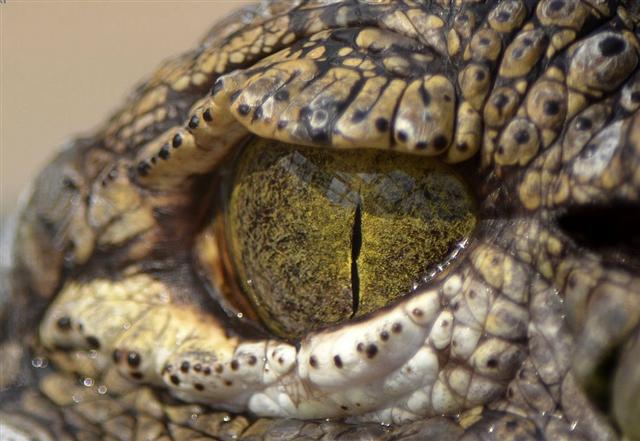 |
|
Al Batn Al
Hūt-26 (Belly of the Fish)
/
Revati-28 (Prosperous)
/
1-iku (Field Measure)
MIRACH (Girdle) =
β
Andromedae,
KEUN MAN MUN (Camp's South Gate) =
φ
Andromedae
(16.0),
ANUNITUM =
τ
Piscium
(16.5),
REVATI (Abundant) =
ζ
Piscium
(16.9)
REGULUS
(α Leonis) |
ν Phoenicis (17.4),
κ Tucanae (17.6)
*159.0 + *182.0 = 341.0 |
No star listed (18) |
ADHIL
(Garment's Train) = ξ Andromedae
(19.3),
θ
Ceti (19.7) |

... Though Andromeda has its roots
most firmly in the Greek tradition,
a female figure in Andromeda's place
appeared in Babylonian astronomy.
The stars that make up Pisces and
the middle portion of modern
Andromeda
formed a constellation representing
a fertility goddess, sometimes named
as Anunitum or the Lady of
the Heavens ... |
|
e tagata oho
era - ki to kava e |
ka oho te Rei |
Tagata itiiti
- ma to kava |
kua moe te goe |
|
Oho.
1. To go: ka-oho!
go! go away! (i.e. 'goodbye' said by
the person staying behind);
ka-oho-mai (very often
contracted to: koho-mai),
welcome! (lit.: come here);
ku-oho-á te tagata, the man has
gone. Ohoga, travel,
direction of a journey;
ohoga-mai, return. 2. Also
rauoho, hair. Vanaga. 1. To
delegate; rava oho, to root.
2. To go, to keep on going, to walk,
to depart, to retire; ka oho,
begone, good-bye; oho amua,
to preced; oho mai, to come,
to bring; oho arurua, to sail
as consorts; hakaoho, to
send, a messenger. 3. Tehe oho te
ikapotu, to abut, adjoin; mei
nei tehe i oho mai ai inei te
ikapotu, as far as, to; kai
oho, to abstain, to forego;
hakaoho, to put on the brakes.
4. The head (only in the composite
rauoho, hair). Churchill.
Rei.
1. To tread, to trample
on: rei kiraro ki te va'e. 2.
(Used figuratively) away with you!
ka-rei kiraro koe, e mageo ê,
go away, you disgusting man. 3. To
shed tears: he rei i te mata vai.
4. Crescent-shaped breast ornament,
necklace; reimiro, wooden,
crescent-shaped breast ornament;
rei matapuku, necklace made of
coral or of mother-of-pearl; rei
pipipipi, necklace made of
shells; rei pureva, necklace
made of stones. 5. Clavicle. Îka
reirei, vanquished enemy, who is
kicked (rei). Vanaga. T. 1.
Neck. 2. Figure-head.
Rei mua
= Figure-head in the bow.
Rei muri = Figure-head in
the stern. Henry. Mother of pearl;
rei
kauaha, fin. Mgv.:
rei,
whale's tooth. Mq.:
éi,
id. This is probably associable with
the general Polynesian
rei,
which means the tooth of the
cachalot, an object held in such
esteem that in Viti one tooth (tambua)
was the ransom of a man's life, the
ransom of a soul on the spirit path
that led through the perils of Na
Kauvandra to the last abode in
Mbulotu. The word is undoubtedly
descriptive, generic as to some
character which Polynesian
perception sees shared by whale
ivory and nacre.
Rei
kauaha is not this
rei;
in the Maori
whakarei designates the
carved work at bow and stern of the
canoe and Tahiti has the same use
but without particularizing the
carving: assuming a sense
descriptive of something which
projects in a relatively thin and
flat form from the main body, and
this describes these canoe
ornaments, it will be seen that it
might be applied to the fins of
fishes, which in these waters are
frequently ornamental in hue and
shape. The latter sense is confined
to the Tongafiti migration.
Reirei, to trample down, to
knead, to pound. Pau.:
Rei-hopehopega, nape. Churchill.
Moe.
To sleep, to lie at full
length, to dream, to brood, to
place, to cohabit; moe atu,
to leave off, to desist; moe atu
ra, to adjourn, to postpone;
moe hakahepo, to talk in the
deep; moe aherepo,
somnambulist, sleepwalker; moe
hakataha, to sleep on the
side; moe no, to oversleep,
concubinage; moe tahae, to be
a light sleeper; moe
tahaga, a sleeper; moe
vaeahatu, moe hakaroa, to
sleep sprawling; rava moe, to
sleep sound; ariga moe ki
raro, to lie flat on the ground;
tae moe, bachelor; hakamoe,
to brood, to fold the wings; to
reserve, to lay up; to struggle. P
Pau.: moe, sleep. Mgv.:
moe, sleep, to lie down, coitus,
to shut the eyes. Mq.: moe,
to sleep, to lie down; haámoe,
to set down on the ground. Ta.:
moe, to sleep, to lie down.
Moea raruga, lying flat.
Moeaivi, thin. Mq.: ivi,
haáivi, id. Ta.: ivi,
id. Moega, mat. Pau.:
moehega, bed. Mgv.: moega,
a sleeping mat. Mq.: moena,
moeka, mat, floor cloth, bed.
Ta.: moea, bed. Moemata,
to sleep with the eyes open; mea
moemata, phantom. Moemoea,
a dream, vision; tikeahaga
moemoea, apparition by night. T
Mgv., Mq., Ta.: moemoea,
dream. Churchill. Mgv. Moemoe,
to steal, to purloin at a food
distribution. Mq.: moemoe, to
seize, to grasp. Churchill. Ta.: 1.
Moemoe, ambush. Ha.:
moemoe, id. 2. Moemoe,
Phyllanthus simplex. To.:
mohemohe, a tree. Churchill.
Mq.: Moehu, exiled, banished,
prisoner of war. Ma.: morehu,
a survivor. Churchill.
Goe. Milky
Way. Vanaga. |
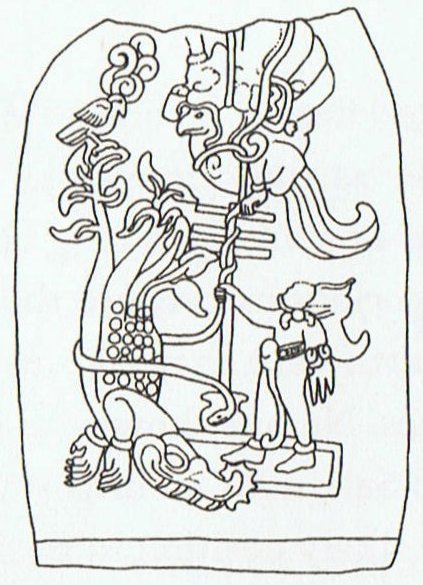
 |
 |
 |
 |
 |
|
Bb11-18
(436) |
Bb11-19 |
Bb11-20 |
Bb11-21 |
|
Oct 8 (281 = *201) |
9 |
10 (100 + 183) |
11 (284) |
|
AUG 4 (217
= *137) |
5 |
6 |
7 (220) |
|
FEBR 4
(400 = *320) |
5 |
6 |
7 (*324) |
|
April 8 |
9 (99 = *19) |
10 |
11 (101) |
|
DHANAB AL
SHUJA (Tail of the Water
Serpent) = γ Hydrae
(201.0),
ι
Centauri (201.4)
*160.0 = *201.4 - *41.4 |
Al Simāk-12
(Lofty) /
Chitra-14 (Bright One)
/
Horn-1
(Crocodile) /
Sa-Sha-Shirū-19
(Virgin's Girdle)
/
ANA-ROTO-3 (Middle pillar)
MIZAR =
ζ
Ursae Majoris (202.4),
SPICA = α Virginis,
ALCOR
(The Fox) = 80 Ursae Majoris
(202.7)
SADALMELIK (α Aquarii) |
71 VIRGINIS
(203.6) |
No star listed (204) |
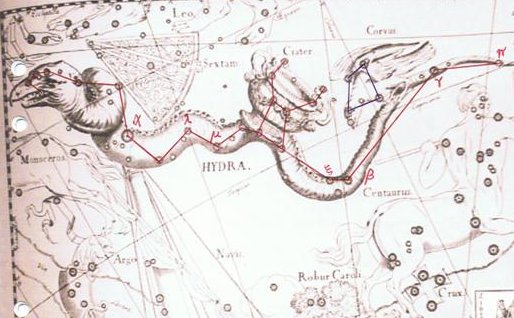 |
|
No star listed (18) |
ADHIL
(Garment's Train) = ξ Andromedae
(19.3),
θ
Ceti (19.7) |
KSORA (Knee) =
δ
Cassiopeiae
(20.1),
ω
Andromedae (20.6),
γ
Phoenicis (20.8) |
δ Phoenicis
(21.5) |
|
Tagata
itiiti - ma to kava |
kua moe
te goe |
erua ra
manu |
kua oho |
|
...
Then a man
arose from ocean // From the
waves a hero started, // Not the
hugest of the hugest, // Not the
smallest of the smallest. // As
a man's thumb was his stature;
// Lofty
as the span of woman
...
→ tagata itiiti.
... Though
Andromeda has its roots most
firmly in the Greek tradition, a
female figure in Andromeda's
place appeared in Babylonian
astronomy. The stars that make
up Pisces and the middle portion
of modern Andromeda
formed a
constellation representing a
fertility goddess, sometimes
named as Anunitum or the
Lady of the Heavens ...
Goe.
Milky Way. Vanaga.
... In
several variants the oak is said
to have fallen over the
Northland River, so as to form
the bridge into the abode of the
dead. Holmberg (quoted by Lauri
Honko, 'Finnen', Wb. Myth.,
p. 369) took the oak for the
Milky Way ...
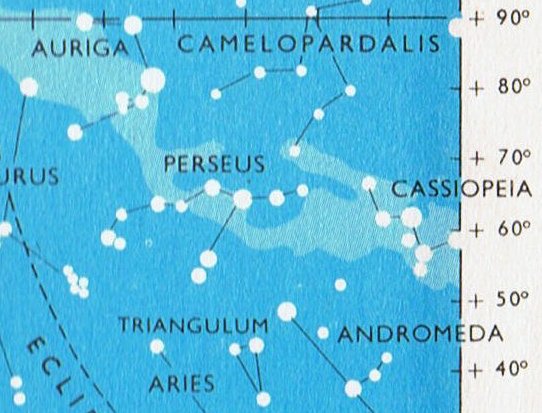 |
 |
-2.jpg)
These facts suggests a possible correspondence between the
5th instruction Ka Mate
instruction and Bb11-22:
|
Team: Ka ora, ka ora |
All together :
Tēnei te tangata pūhuruhuru
Nāna nei i tiki mai whakawhiti te rā
Ā upane, ka upane
Ā upane, ka upane
Whiti te rā, hī! |
 |
 |
|
Bb11-22
(440) |
Bb11-23 |
|
Oct 12
(285 → Dec 31) |
13 (→ Jan
1) |
|
'Sept 15 |
16 (259 =
286 - 27) |
|
AUG 8
(221
→
285 - 64) |
9 (217 +
5 = 222) |
|
FEBR 8
(*325) |
9 (40) |
|
HEZE =
ζ
Virginis
(205.0),
SOUTHERN PINWHEEL GALAXY = M83 Hydrae
(205.7) |
ε Centauri (206.3),
κ Oct. (206.4)
*165.0 = *206.4 - 41.4 |

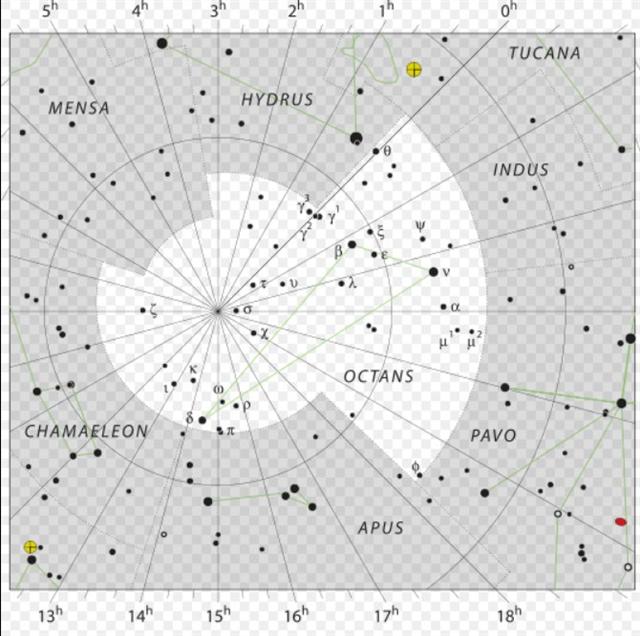 |
|
υ Andromedae
(22.9) |
ACHERNAR
(End of the River) =
α
Eridani
(23.3),
χ
Andromedae (23.6),
τ
Andromedae |
|
ki te rima - oona |
mai tae atu ki te Raa |
|
All together :
This the hairy man
that stands here…
…who brought the sun and caused it to shine
A step upward, another step upward
A step upward, another step upward
The sun shines!
It is death, it is death: it
is life, it is life; this is the man who
enabled me to live as I climb up step by
step toward sunlight. |
|
... 'One
sought above in the sky, below in the lap of
the earth', as we are informed by variants,
but then Vainamoinen asked his devine mother
for help: Then a
man arose from ocean // From the waves a
hero started, // Not the hugest of the
hugest, // Not the smallest of the smallest.
// As a man's thumb was his stature; //
Lofty as the span of
woman. The
'puny man from the ocean',
whose 'hair reached
down to his heels, the beard to his knees',
announces, 'I have come to
fell the oak tree / And to splinter it
to fragments'. And
so he does. In several variants the oak is
said to have fallen over the Northland
River, so as to form the bridge into the
abode of the dead. Holmberg (quoted by Lauri
Honko, 'Finnen', Wb. Myth., p. 369)
took the oak for the Milky Way
... |
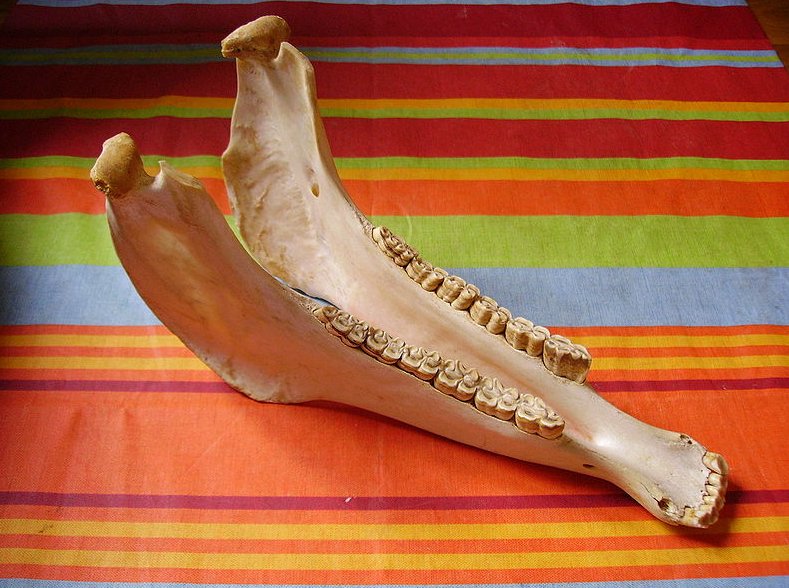
 |
 |
 |
 |
 |
|
Bb11-24 |
Bb11-25 |
Bb11-26 (444) |
Bb11-27 |
Bb11-28 |
|
Oct 14 |
15 (*208) |
16 |
17 (290) |
18 (*211) |
|
'Sept 17 (260) |
18 (*181) |
19 (*182) |
20 (236
+ 27 = 290 -
27) |
21 (264) |
|
AUG 10 |
11 (*144) |
12 (Leap day?) |
13 (225) |
14 (*147 = *211 -
*64) |
|
FEBR 10 (41) |
11 (42 + 365) |
12 (408) |
13 |
14 (45 = 360 / 8) |
|
No star listed (207) |
τ
Bootis (208.2),
BENETNASH (Leader of the Daughters of the Bier) =
η
Ursae Majoris
(208.5),
ν
Centauri (208.7),
μ
Centauri,
υ
Bootis (208.8) |
No star listed (209) |
MUPHRID (Solitary Star) = η Bootis
(210.1), ζ Centauri (210.3) |
φ Centauri (211.0), υ¹ Centauri (211.1), υ² Centauri
(211.8), τ Virginis (211.9) |
|
ALSEIPH (Scimitar) =
φ
Persei
(24.5),
τ
Ceti (24.7) |
No star listed (25) |
ANA-NIA-10 (Pillar-to-fish by)
χ
Ceti (26.1),
POLARIS =
α
Ursae Minoris,
BATEN KAITOS (Belly of the Fish) =
ζ
Ceti
(26.6),
METALLAH =
α
Trianguli
(26.9) |
Al Sharatain-1
/
Ashvini-1
/
Bond-16 (Dog)
/
Mahrū-sha-rishu-ku-1
(Front of the Head of Ku)
SEGIN =
ε
Cassiopeia, MESARTHIM =
γ
Arietis,
ψ
Phoenicis (27.2),
SHERATAN (Pair of Signs) =
β
Arietis,
φ
Phoenicis (27.4)
*351.0 = *27.4 - *41.4 |
ι Arietis (28.0), λ Arietis (28.2), υ Ceti (28.8) |
 |
|
te hau
tea |
ma te
tagata atariki tona atariki - e tahina ra |
mai tae
tara huki hia erua |
|
Hina. Grey or white hair.
Korohua hina tea, ruau hina tea, hoary old man,
hoary old woman. Hinarere, great-grandson.
Vanaga. Pau.: Hina: Posterity. Ta.: hina,
id. Mq.: hina, id. Hinagaro, to wish.
Mgv.: aka-ina-garo ? to call names. Ta.:
hinaaro, to desire. Mq.: hinenaó, to
love. Sa.: finagalo, to wish. Ma.:
hine-ngaro, affection. Mgv.: Hina: White,
gray hair. Ta.: hina-hina, id. Mq.: hina,
id. Sa.: sina, id. Ma.: hina, id.
Churchill. It is a matter of no slight interest to
find that a stem which in Polynesia serves to
designate the lesser luminary is used in Melanesia
to denote the sun. In this connection our linguistic
material has left two records. One that la,
the general Polynesian word for the sun, was not
carried in the Proto-Samoan migration, for it has
left no trace in the Melanesian halting-places. The
other is that masina, the general Polynesian
word for the moon, was brought into Polynesia, in
its present derivative form, by the Tongafiti
migration, for it is only in Sesake that we find
masina as moon. Our Polynesian records show us
that sina was a sun name, i.e. the shiner.
Churchill 2. |
Significantly it was the Dragon star, Thuban (α
Draconis) - at the Tail of Draco - who rose with the Sun at the 'September
equinox.
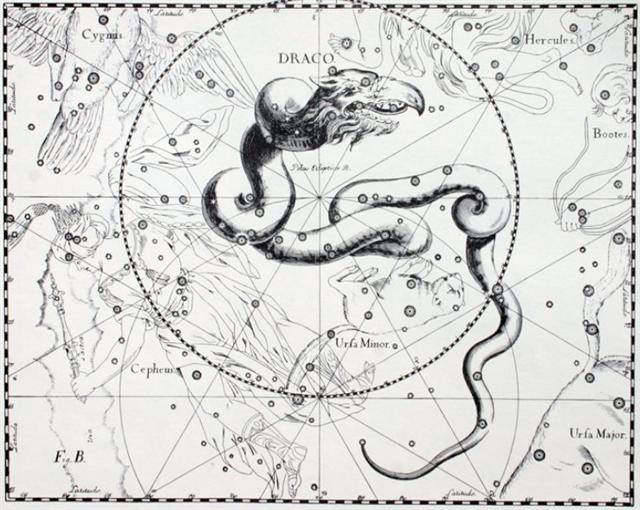
This was when the Full Moon
(ideally) should have been at the Knot (Alrisha):
 |
 |
 |
 |
 |
 |
|
Bb11-29 |
Bb11-30 (448) |
Bb11-31 |
Bb11-32 |
Bb11-33 |
Bb11-34 |
|
AGENA (At the Knee) =
β
Centauri
(212.1),
θ
Apodis (212.5),
THUBAN (Dragon) =
α
Draconis
(212.8) |
14h (213.1)
π Hydrae, χ
Centauri (213.0),
MENKENT (Shoulder of the Centaur) =
θ
Centauri
(213.1) |
ASELLUS TERTIUS (3rd Ass Colt) = κ Bootis, κ
Virginis,
14 Bootis
(214.8) |
15 Bootis
(215.2),
ARCTURUS =
α
Bootis (215.4),
ASELLUS SECUNDUS (2nd Ass Colt) =
ι Bootis
(215.5),
SYRMA (Train of the Virgin's Robe) =
ι
Virginis,
λ
Bootis (215.6),
η
Apodis (215.8)
*174.0 = *215.4 - *41.4 |
KHAMBALIA (Crooked-Clawed) = λ Virginis (216.4),
υ Virginis (216.5), ψ Centauri (216.6), ε Apodis
(216.8)
*175.0 = *216.4 - *41.4 |
ASELLUS PRIMUS (1st Ass Colt) = θ Bootis
(217.8) |
|
ALRISHA (The Knot) = α Piscium, χ Phoenicis (29.2),
ε Trianguli (29.4),
ALAMAK
(Caracal) = γ Andromedae
(29.7)
*353.0 = *29.4 - *41.4 |
Arku-sha-rishu-ku-2
(Back of the Head of Ku)
2h (*30.4 = *354.0 + *41.4)
κ
Arietis (30.3),
HAMAL (Sheep) =
α
Arietis
(30.5)
ALKES (α
Crateris) |
DELTOTUM = β Trianguli
(31.2), ι Trianguli (31.7), η Arietis (31.9) |
ξ¹ Ceti (32.1) |
γ,
δ
Trianguli (33.0),
χ
Persei (33.2),
10 Trianguli
(33.5),
θ
Arietis (33.3),
MIRA
(Astonishing) =
ο
Ceti
(33.7) |
No star listed (34) |
|
kua
oho ia i te henua - eko te matagi |
kua
haga hopu hia ra -
ka oho - ka hopu |
e
tagata hakarau hia
era - ka oho korua |
ki te
niu e tutu mai ena - koia - kua haga ki to mea -
e ka hahaú hia |
The fingers of a hand can be
closed, forming a knot as a sign of zero:
... The practice of turning down the fingers, contrary to
our practice, deserves notice, as perhaps explaining why
sometimes savages are reported to be unable to count above
four. The European holds up one finger, which he counts, the
native counts those that are down and says 'four'. Two
fingers held up, the native counting those that are down,
calls 'three'; and so on until the white man, holding up
five fingers, gives the native none turned down to count.
The native is nunplussed, and the enquirer reports that
savages can not count above four ...
In the Swedish language the expression 'att knyta näven'
('to tie the fist') means to close the fist.
The Aselli stars in Bootes were
to be counted down to the culmination (at 21h) of
the Mouth of the
Fish:

 |
 |
 |
 |
 |
 |
|
Bb11-35 |
Bb11-36 |
Bb11-37 |
Bb11-38 |
Bb11-39 (457) |
(2 * 229) |
|
τ
Lupi,
δ
Oct. (218.1),
φ
Virginis (218.7)
FOMALHAUT (α Piscis Austrini) |
σ
Lupi (219.1),
ρ
Bootis (219.5),
HARIS (Keeper) =
γ
Bootis
(219.7) |
σ Bootis (220.2),
η Centauri (220.4)
*179.0 = *220.4 - *41.4 |
ρ Lupi (221.0),
TOLIMAN = α Centauri
(221.2), π Bootis (221.8), ζ Bootis (221.9) |
31 Bootis
(222.0),
YANG MUN (South Gate) =
α
Lupi
(222.1),
RIJL AL AWWA (Foot of the Barker) =
μ
Virginis
(222.5),
ο
Bootis (222.9) |
IZAR (Girdle) =
ε
Bootis
(223.0),
109 Virginis,
α
Apodis (223.3),
μ
Librae (223.8) |
|
ξ Arietis (35.0),
ρ Ceti (35.4), 12 Trianguli
(35.8), ξ² Ceti (35.9)
*360.0 = *35.4 - *41.4 |
σ Ceti (36.9) |
ν Ceti (37.9) |
ν Arietis (38.5), δ, ε Ceti (38.8) |
μ
Arietis (39.4), HEAD OF THE FLY = 35 Arietis
(39.6),
KAFFALJIDHMA (Part of a Hand) =
γ
Ceti,
θ
Persei (39.8)
*363.0
= *39.4 - *41.4 |
π
Ceti,
ο
Arietis (40.0),
ANGETENAR (Bend in the River) =
τ¹
Eridani,
μ
Ceti (40.2),
RIGHT WING = 39 Arietis
(40.9) |
|
ka tu
te Rei - a matagi - ma te hokohuki - ma te ua |
hakatu te Rei a matagi - ma te hokohuki ma te ua |
ihe
haki tua pu |
ma to rutu |
|
Haki. Certainly.
Churchill.
Rutu. 1. To read, to recite, to
pronounce words solemnly; he-rutu i te kohau
motu, to read the rongorongo tablets;
hare rutu rogorogo mo hakama'a ki te ga poki ite
kai, i te rogorogo, rongorongo school, house
in which children were taught reading and
writing the rongorongo signs. 2. To pelt with
stones. 3. To gather in great numbers (of
people). Vanaga. Sound. Rutu-rongorongo =
the sound of recitation. Barthel. T. Beat.
Henry. To recite; tae rutu, irreverence.
Churchill.Pau.: rutu, a drum. Mgv.:
rutu, to beat, to cause to resound. Ta.:
rutu, a drum, to drum. Mq.: utu, to
drum. Sa.: lutu, to shake a rattle.
Churchill. |
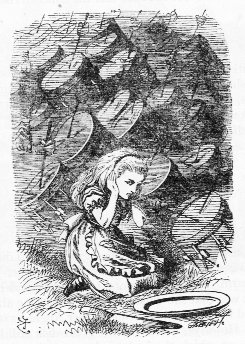
 |
 |
 |
|
Bb11-41 |
Bb11-42
(460) |
Bb11-43 |
|
Oct 31 |
Nov 1 |
2 (306) |
|
Al Zubānā-14a
(Claws) /
Visakha-16
(Forked)
/
Root-3 (Badger)
ZUBEN ELGENUBI (Southern Claw) =
α
Librae
(224.2),
ξ
Bootis,
ο
Lupi (224.5) |
KOCHAB (Kakkab) =
β Ursae Min. (225.0),
ξ Librae (225.7) |
KE KWAN (Cavalry Officer) =
β Lupi
(226.3),
KE KWAN =
κ
Centauri (226.4),
ZUBEN ELAKRIBI (Claw of the Scorpion) = δ
Librae
(226.8),
π¹
Oct.
(226.9) |
|
May 1
(121) |
2 |
3 |
|
'April 4 |
5 (95) |
6 |
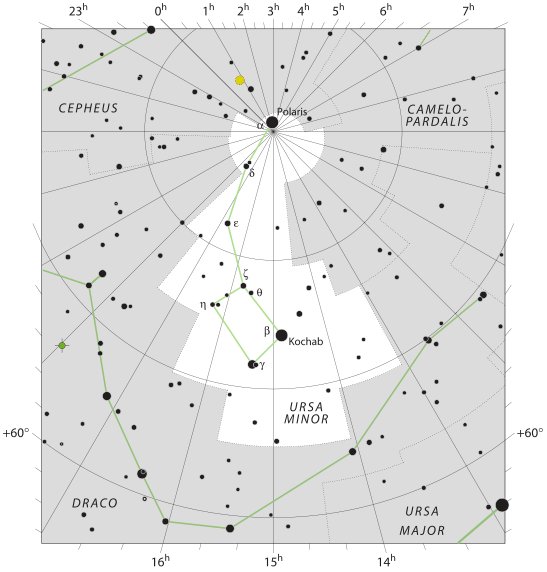 |
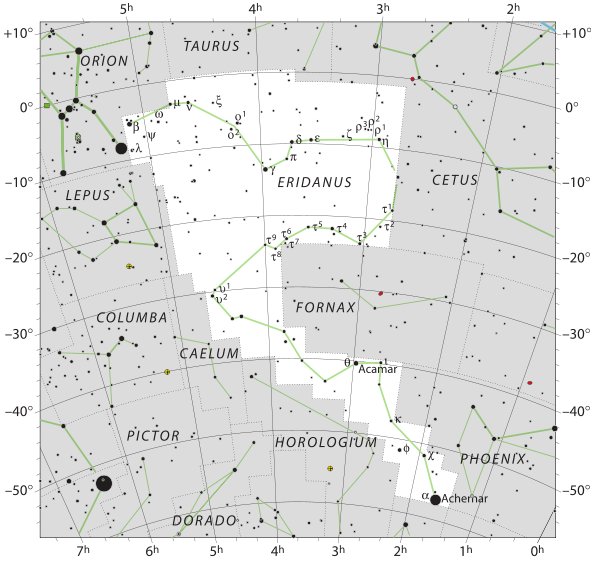 |
|
Bharani-2 (Yoni)
/
Stomach-17
(Pheasant)
π
Arietis (41.2),
MIRAM (Next to the Pleiades) =
η
Persei
(41.3),
BHARANI = 41 Arietis (41.4),
τ²
Eridani,
σ
Arietis (41.7) |
TA LING (Great Mound) = τ Persei (42.4)
*1.0 = *42.4 - *41.4 |
ρ
Arietis (43.0),
GORGONEA SECUNDA =
π
Persei
(43.5),
ACAMAR (End of the River) =
θ
Eridani
(43.6),
ε
Arietis (43.7),
λ
Ceti (43.9)
DENEBOLA (β Leonis) |
|
"March 21 |
22 (81) |
23 |
|
ko te tagata - vero - i to ia - kua vero - i
to ia |
|
... A
vestige of the practice of putting the king
to death at the end of a year's reign
appears to have survived in the festival
called Macahity, which used to be
celebrated in Hawaii during the last month
of the year. About a hundred years ago a
Russian voyager described the custom as
follows: 'The taboo Macahity is not
unlike to our festival of Christmas. It
continues a whole month, during which the
people amuse themselves with dances, plays,
and sham-fights of every kind. The king must
open this festival wherever he is. On this
occasion his majesty dresses himself in his
richest cloak and helmet, and is paddled in
a canoe along the shore, followed sometimes
by many of his subjects. He embarks early,
and must finish his excursion at sunrise.
The strongest and most expert of the
warriors is chosen to receive him on his
landing. The warrior watches the canoe along
the beach; and as soon as the king lands,
and has thrown off his cloak, he darts his
spear at him, from a
distance of about thirty
paces, and the king must either catch the
spear in his hand, or suffer from it: there
is no jesting in the business. Having caught
it, he carries it under his arm, with the
sharp end downwards, into the temple or
heavoo. On his entrance, the assembled
multitude begin their sham-fights, and
immediately the air is obscured by clouds of
spears, made for the occasion with blunted
ends. Hamamea (the king) has been
frequently advised to abolish this
ridiculous ceremony, in which he risks his
life every year; but to no effect. His
answer always is, that he is as able to
catch a spear as any one on the island is to
throw it at him ...
Vero.
To throw, to hurl (a lance, a
spear). This word was also used with the
particle kua preposed: koía kua
vero i te matá, he is the one who threw
the obsidian [weapon]. Verovero, to
throw, to hurl repeatedly, quickly
(iterative of vero). Vanaga. 1.
Arrow, dart, harpoon, lance, spear, nail, to
lacerate, to transpierce (veo). P
Mgv.: vero, to dart, to throw a
lance, the tail; verovero, ray, beam,
tentacle. Mq.: veó, dart, lance,
harpoon, tail, horn. Ta.: vero, dart,
lance. 2. To turn over face down. 3. Ta.:
verovero, to twinkle like the stars.
Ha.: welowelo, the light of a
firebrand thrown into the air. 4. Mq.:
veo, tenth month of the lunar year. Ha.:
welo, a month (about April).
Churchill. Sa.: velo, to cast a spear
or dart, to spear. To.: velo, to
dart. Fu.: velo, velosi, to
lance. Uvea: velo, to cast; impulse,
incitement. Niuē:
velo,
to throw a spear or dart. Ma.:
wero, to
stab, to pierce, to spear. Ta.:
vero, to
dart or throw a spear. Mg.: vero,
to pierce, to lance. Mgv.: vero,
to lance, to throw a spear. Mq.:
veo, to
lance, to throw a spear. Churchill 2. |

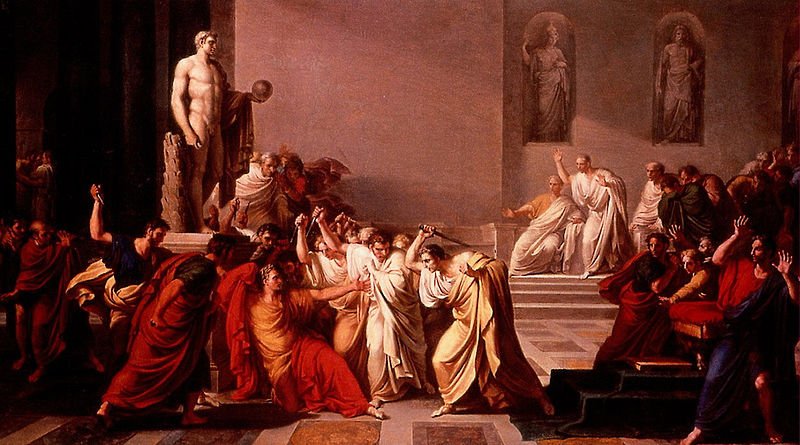
|




























-2.jpg)























